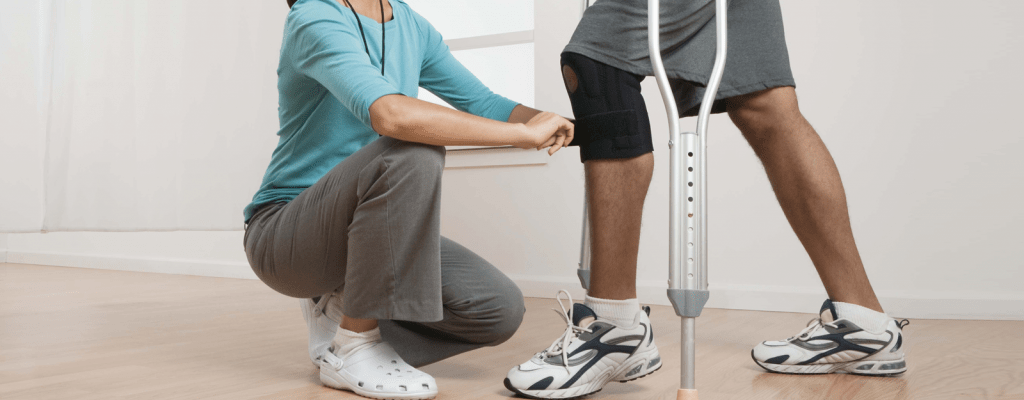How to Choose Post-Operative Care Rehabilitation Centers
None of us like to live in a nursing home. Now with the availability of rehabilitation centers which specifically offers post-operative care to patients, there are pretty good chances of shortening the patients’ stay in the nursing homes. After any surgery or after any serious ailment the hospitals often discharge the patients before they are completely ready to live independently at home again. In such circumstances, the concerned patient faces a lot of issues in leading a normal life. In order to do away with these issues and enable the concerned patient to get back to their normal life, a phase at rehabilitation center can help immensely. The post-operative care offered by the rehabilitation centers helps the patients in regaining their normal lifestyle and adapt to the changes that occurred post-surgery.
The period of stay in a rehabilitation center after a surgery allows them time to heal. The expert staff provide the necessary nursing, occupational and physical therapy that facilitates the person to regain the required strength for proper functioning at home.
The overall length of stay in a rehabilitation center varies from patient to patient depending on their health conditions and other certain parameters. The ultimate goal of spending time in a rehabilitation center is to enable the patient to return back home at the earliest. The rehab centers do have different kinds of infrastructure. The rehab units usually have private as well as double rooms. The rehab units are staffed with well-trained doctors, nurses, physical therapists, speech therapists and occupational therapists who work as a team to help the patients to recover at the earliest and enable them to lead a normal life just like they used to before the surgery or the serious illness.
The rehab units cater to the patients’ medically complex needs as well, especially for those who are recuperating from a massive stroke or heart attack. There are several patients who are recovering from major surgeries like joint replacements or heart and lung issues. These patients require special programs in the rehabilitation centers in order to recover completely.
HEALTH INSURANCE POLICIES CAN BE A GREAT HELP
Most of the health insurance policies typically pay for short stays in the rehabilitation units. In order to qualify for the reimbursements, the patient necessarily has to be hospitalized for at least three consecutive days. Several of the health insurance policies pay 100 percent of the entire expenses in a rehab unit for the first twenty days. The expenses incurred in the next eighty days are co-paid by the health insurance company and the patient. Many people do have secondary health insurance policies which pay the entire cost of the eighty days as well. Those you have opted for a good health insurance policy usually do not have out-of-pocket cost for opting for the rehabilitation services.
The rehab facilities vary from patient to patient. Many people prefer the ones that are near to their homes or that specific one which has been referred by any of the trusted hospital staffs. Some of the retirement communities admit the non-residents to their rehab units. There are other retirement communities that only take their own residents. The standalone rehabilitation centers usually admit any patient who opts for the rehab care.
CHOOSING THE RIGHT REHAB CENTER
Staffing is one of the prime considerations while choosing a rehab center for receiving the best outcomes. SuVitas is one of the very well-organized and popular rehabilitation centers in Hyderabad and is working on expanding to other cities in India as well. They have a team of well-trained professionals which consist of a medical doctor, physiatrist, physiotherapists, skilled nurses, occupational therapists, speech therapists, dietician and cousellors. They all work together as a team for the welfare of the patients. They have a very well-planned and customized way of treatment depending on the health condition and issues of the patients. For example, a patient after a knee replacement is given a perfect line of rehabilitation treatment after assessing the patient’s condition post-surgery. The rehab plan would typically call for the occupational and physical therapy that would work in the best possible way. Physical therapy is often performed several times within the course of the day and would include walking practices and bike exercises. Occupational therapy is usually done in the patent’s room and includes the activities like independently wearing socks and shoes. Occupational therapy also includes learning the ways of dressing in spite of the fact that the patient is less mobile after the knee replacement surgery.
It is also very important to make the patient feel comfortable in the rehab center. If the patient feels good about the environment, then the chances of healing is more and the healing process is also automatically accelerated.
The chosen rehab should have the best infrastructure that is required for the recovery of the patients. The rehab facility should necessarily have the updated equipment, facilities involving ultrasound therapy for stimulating muscles etc.
Another great way of checking a rehab facility is to enquire about the survey information which is maintained in a public file for licensing purposes. A fair amount of online research regarding the reviews of other patients and families can also help you make an informed decision in choosing the right rehab center.
Also, the approach and line of treatment of the rehab centers should be enquired. There are several rehab centers which provide care even after the patient is discharged from the rehab center. The patient also is given the flexibility to return to the rehab facility any time for any necessary exercise program. The therapists and nurses also visit the patient’s home as per planned schedules for regular check-ups and to track the patient’s progress in the recovery process. Some rehab centers also provide certain other services like well-cooked and nutritious meals which are home delivered or providing necessary housekeeping at the patient’s home.

